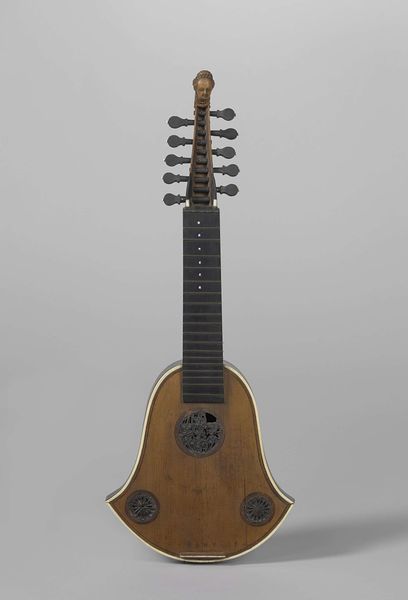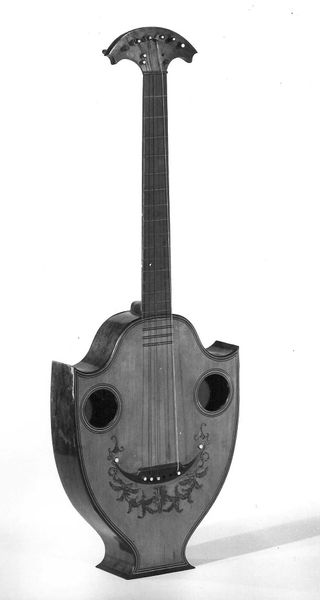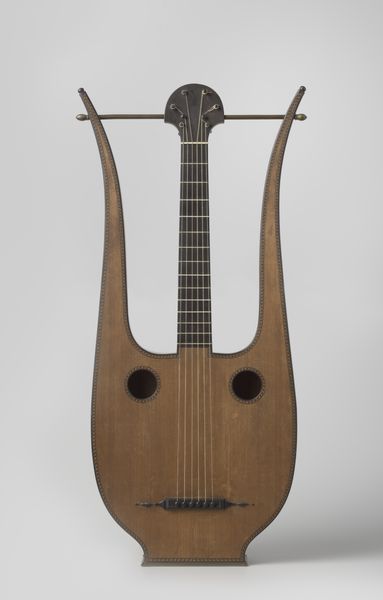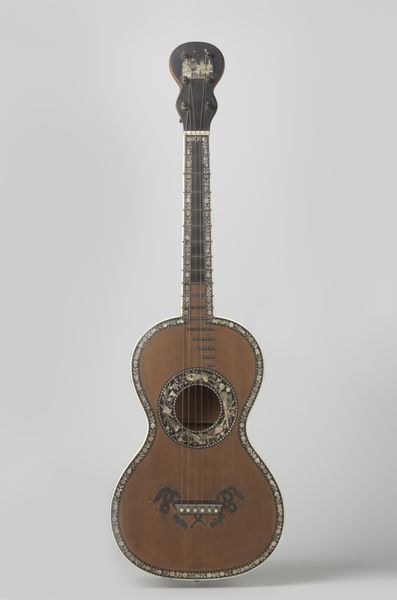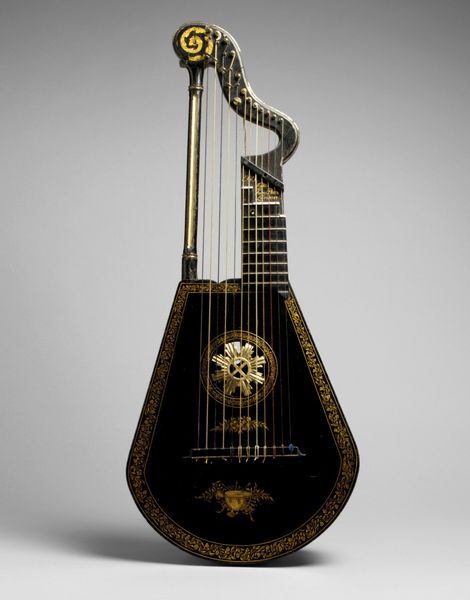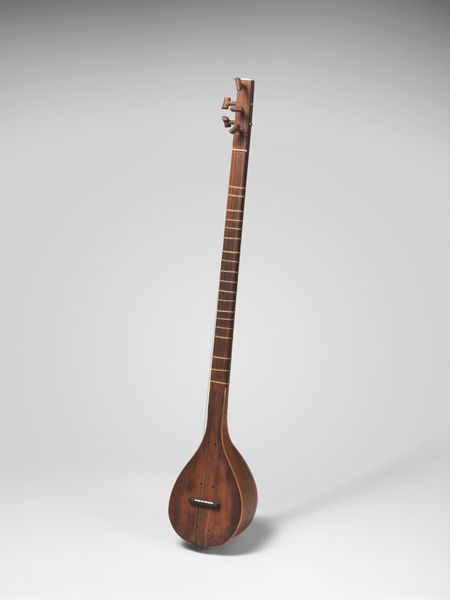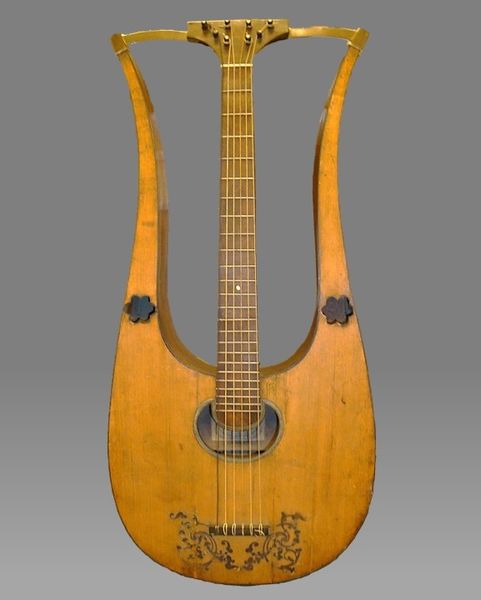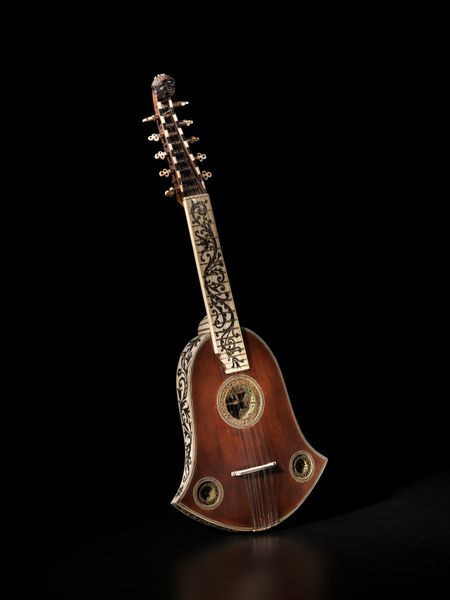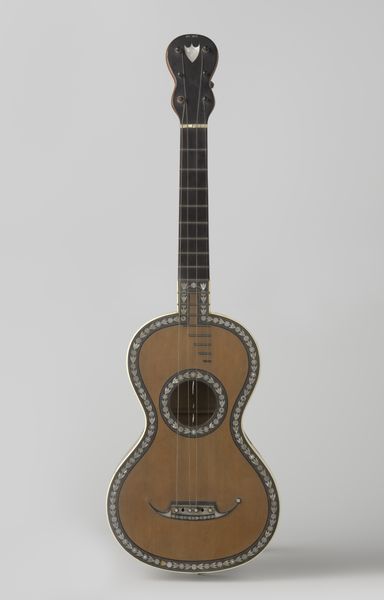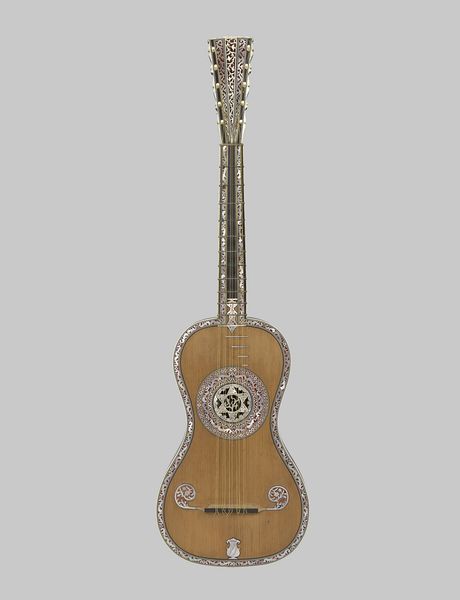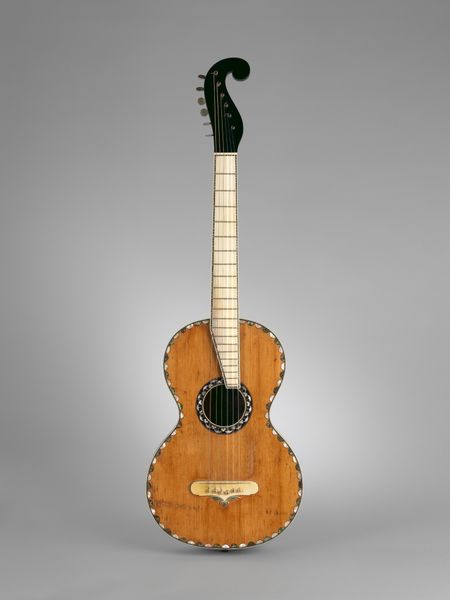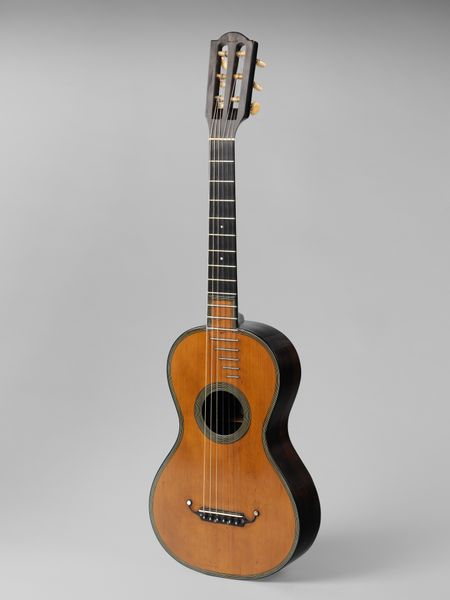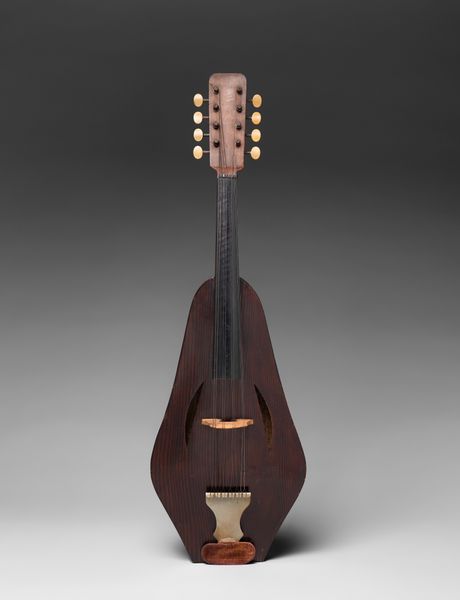
#
3d model
#
profile picture
#
3d image
#
3d printed part
#
3d printing
#
plastic material rendering
#
virtual 3d design
#
3d shape
#
metallic object render
#
men
#
3d modeling
#
united-states
#
musical-instrument
Dimensions: Overall length 30.25 in. (76.8 cm); width 7.25 in. (18.4 cm) lower bout; depth 1.75 in. (4.4 cm). Scale length 22.5 in. (572 mm)
Copyright: Public Domain
Curator: Here we have an Electar Lap Steel Electric Guitar, crafted sometime between 1932 and 1942. The Epiphone company, more famous for its archtop guitars, produced this instrument. Editor: Stark. That’s the first word that comes to mind. The all-black finish gives it an almost menacing quality, doesn’t it? It feels like a proto-industrial design. Curator: Absolutely. This guitar emerges during the rise of electric instruments, transforming American popular music. Imagine its impact during the swing era, adding that distinct Hawaiian sound to orchestras and small ensembles! The appeal grew quickly as more commercial avenues surfaced. Editor: I'm struck by how the linear forms dictate the entire aesthetic. That long, rectangular neck leading down to the streamlined body—it’s so clean, so unadorned. Even the knobs look like functional shapes, adding to that powerful minimalist aesthetic. The contrasting texture of the fretboard is critical to the whole composition. Curator: And notice how it aligns with broader social trends! Mass production shaped not only how the instrument was made but also how music was consumed and distributed via radio and records. Music rapidly grew to occupy its role as a consumer commodity during this time. Editor: I see what you mean about this period informing consumerism, but the eye keeps returning to the instrument itself, doesn’t it? How the solid body changes its resonant qualities completely. A re-imagining of acoustic potential. Curator: Exactly, shifting from projection volume alone to amplifying and modulating existing qualities and tones, thus making it popular with performing groups such as gospel ensembles! It reflects the increasing urbanization and commercialization of leisure during the Depression era and its effect on American musical style. Editor: It's really fascinating to consider the evolution of instrument design, here represented by simple formal changes that could usher new eras of popular music. What seems utilitarian carries a subtle, complex elegance when you begin to consider the design elements individually and as a whole. Curator: A reminder that technological innovation often comes wrapped in cultural shifts, changing both artistic expression and the commercial side of culture production, which is precisely the impact that instruments like the Electar left behind.
Comments
No comments
Be the first to comment and join the conversation on the ultimate creative platform.
